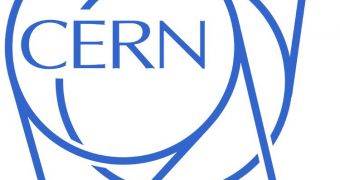At 5:15 pm yesterday evening, October 30, the Large Hadron Collider (LHC) conducted its last proton collisions for 2011. The announcement was made yesterday by officials at the European Organization for Nuclear Research (CERN), which manages the lab.
In total, the LHC ran proton collisions for exactly 180 days this year, registering about four hundred trillion successful events with its four main instruments. According to investigators, this is more than what the accelerator had scheduled for this year.
Though opened a full year behind schedule, the accelerator has been made to run at high capacity faster than physicists originally expected to be possible. The energy of each of its two beams has increased constantly this year, until it reached a level of 3.5 teraelectronvolts (TeV) per beam.
That represents a total energy output of 7 TeV combined, which is about half of what the accelerator is actually capable of. The second-most powerful collider in the world, the now-decommissioned Fermilab, was only able to reach a combined energy output of around 1 Tev.
“At the end of this year’s proton running, the LHC is reaching cruising speed. To put things in context, the present data production rate is a factor of 4 million higher than in the first run in 2010 and a factor of 30 higher than at the beginning of 2011,” CERN Director for Accelerators and Technology, Steve Myers, explains.
He adds that the most important objective the LHC achieved this year was narrowing down the possible energy range of the Higgs boson by a wide margin. Detecting this elementary force carrier is the main reason why the particle accelerator was built in the first place.
At the same time, the data narrowed down the possible energy ranges for discovering supersymmetric particles, the second-most important reason for the construction of the LHC. Detecting these two classes of particles could change the Standard Model of Particle Physics forever.
“It has been a remarkable and exciting year for the whole LHC scientific community, in particular for our students and post-docs from all over the world,” ATLAS spokesperson Fabiola Gianotti explains.
“We have made a huge number of measurements of the Standard Model and accessed unexplored territory in searches for new physics. In particular, we have constrained the Higgs particle to the light end of its possible mass range, if it exists at all,” she goes on to say.
“This is where both theory and experimental data expected it would be, but it’s the hardest mass range to study,” Gianotti adds. The ATLAS experiment is one of three most important particle detectors on the LHC.
At this point, the machine is being prepared to run lead ions through its 27-kilometer tunnels. These maneuvers will last for about a month, before the LHC takes a break until 2012.

 14 DAY TRIAL //
14 DAY TRIAL //